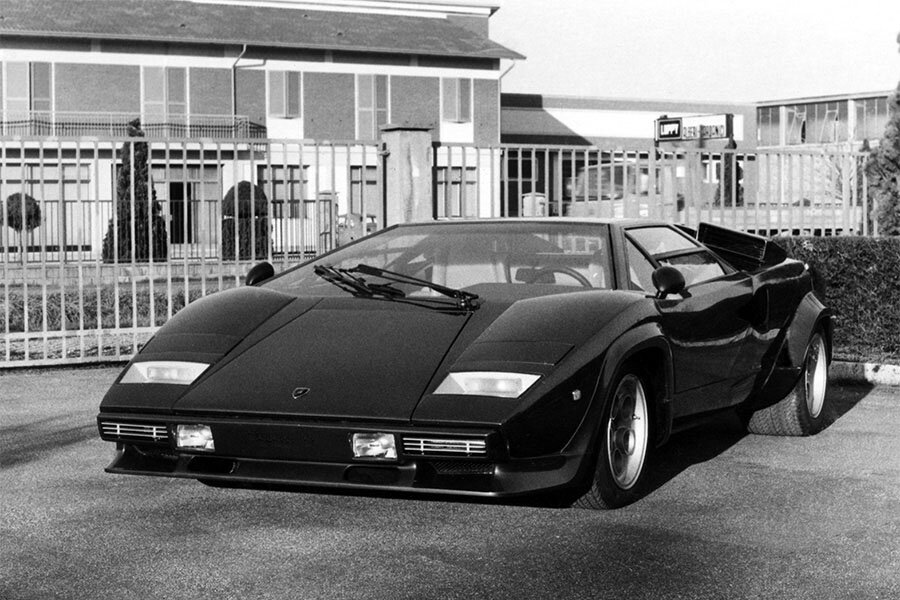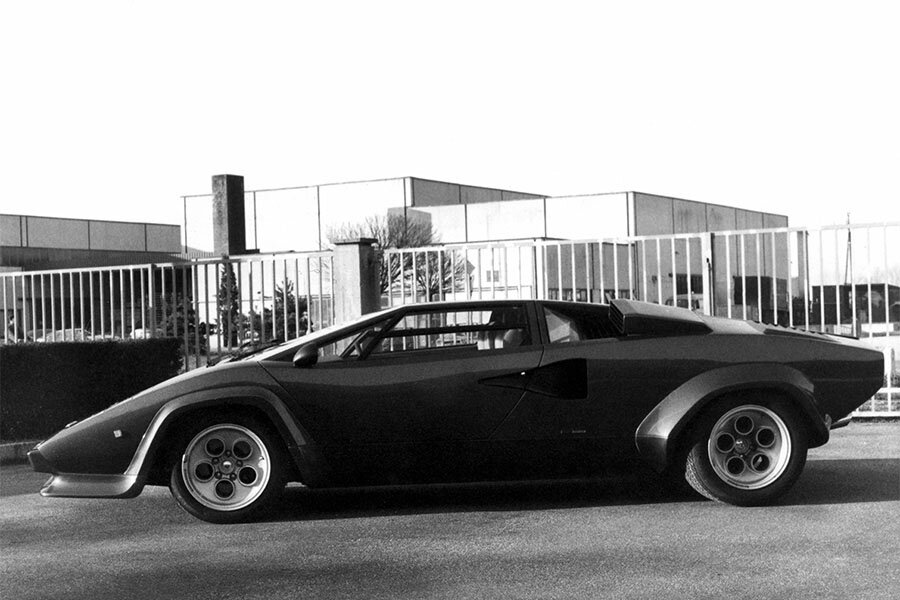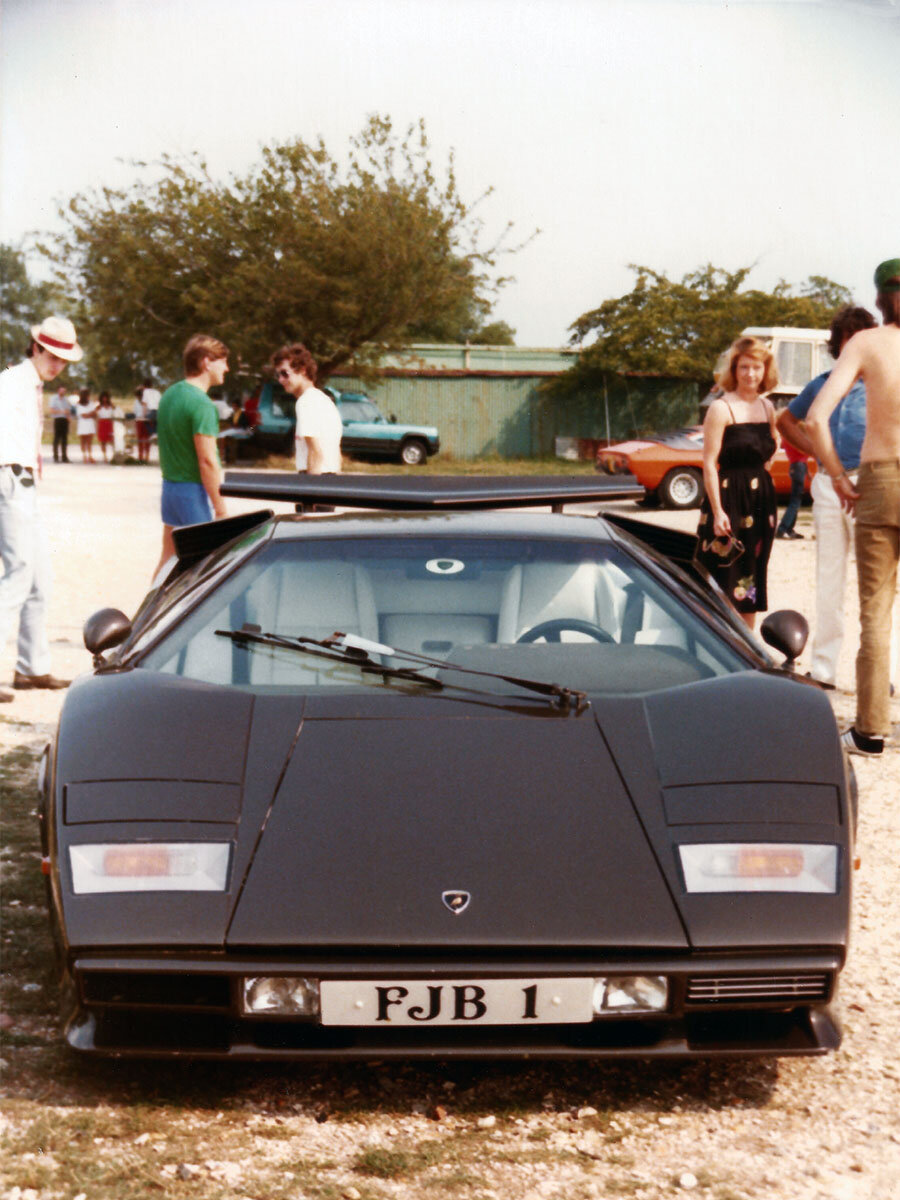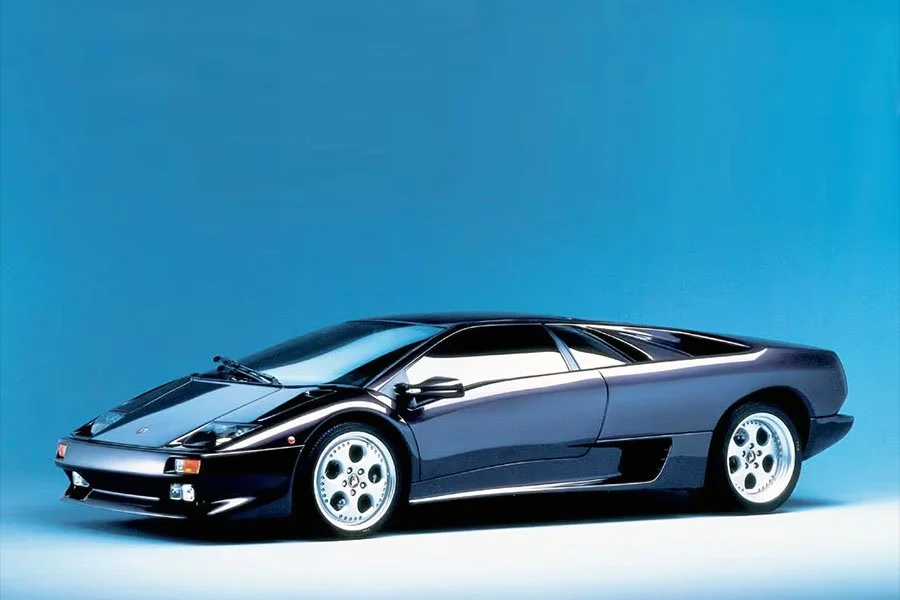Guide: Wolf Lambo + Everyone - a Historical & Technical Appraisal of the Lamborghini Countach LP400 S
/BACKGROUND
At the Geneva Motor Show in March 1978, Lamborghini unveiled the Countach S: a production version of the widebody Countach Speciale.
Five of the super exclusive Countach Speciales had been produced for some of Lamborghini’s best customers, one of whom, Walter Wolf, bankrolled the entire project.
Wolf was a multi-millionaire industrialist and F1 team owner. However, rather than commission the factory to create his dream Countach, Wolf gave the task to Dallara Automobili.
Giampaolo Dallara had worked as Lamborghini’s Chief Designer between 1963 and 1968. In 1972, he established his own company which primarily focused on racing car design.
Dallara had already collaborated with Wolf on F1 cars. As Automobili Lamborghini was clearly in some disarray, outsourcing the Speciale programme seemed the best way to proceed.
Wolf’s finished car (chassis 1120148) was then sent to the factory for assessment. Afterwards, Lamborghini produced four further enhanced replicas including a second example for Walter Wolf (chassis 1120202).
Lamborghini’s problems had started with the early 1970s recession and gradually worsened as the decade wore on.
Ferruccio Lamborghini left the company in 1974 in the midst of the Oil Crisis. Unfortunately, the new owners, Georges-Henri Rossetti and Rene Leimer, proved to be incapable of stimulating a revival. In fact, Rossetti and Leimer’s consistently poor decision-making accelerated Lamborghini’s seemingly inevitable demise.
No better example of this was the squandering of state aid and a large payment from BMW to develop the M1. Inexplicably, Rossetti and Leimer allocated much of the cash to a military all-terrain vehicle (the Cheetah) that proved a complete flop.
Barely six months after the Countach S was displayed at Geneva, Automobili Lamborghini filed for bankruptcy.
The company spent the next couple of years in receivership as the Italian authorities desperately tried to find a suitable buyer. During this time, production slowed to a trickle. To keep the lights on, Lamborghini’s court-appointed boss, Alessandro Artese, secured a contract to convert Fiat 127s into off-road vehicles.
The Countach S thus emerged during the most troubled time in Lamborghini’s history. However, none of that affected its status as the ultimate supercar of its day.
Since the original Countach was launched, the advancement of wheel, tyre and suspension technology had been rapid.
The idea for an uprated Countach with wide wheels, ultra low profile tyres and suitably modified suspension had been mooted from an early stage. But with no cash for development, little was done before Walter Wolf took matters into his own hands.
CHASSIS
To accommodate Pirelli’s ultra low profile P7 tyres and a set of dramatically wider wheels, several modifications had to be made to the suspension and hubs.
The suspension layout itself was fully independent with double wishbones at the front and upper lateral links, reversed lower wishbones and upper and lower trailing arms at the back. Coil springs and telescopic Koni dampers were installed at each corner (two per side at the rear).
Thicker anti-roll bars were fitted at either end.
Sand-cast magnesium wheels were produced by Campagnolo to match the design used by the Lamborghini Silhouette and Bravo. Of 15-inch diameter, they measured 8.5-inches wide at the front and 12-inches wide at the rear.
This was a considerable increase over the original 14-inch wheels fitted to the LP400. These had been 7.5 and 9.5-inches wide front to back respectively.
Larger ATE brake discs were another new feature added to the Countach S. They had a 300mm diameter at the front and 284mm diameter at the rear compared to 267mm all round previously. The original Girling brake calipers were switched to ATE components.
Track measurements grew dramatically: 32mm was added at the front and 86mm at the back.
The chassis was the familiar round tubed spaceframe fabricated by Marchesi & C. in Modena. Its floorpan was a mixture of fibreglass and steel.
Fuel tanks with a combined capacity of 120-litres were located at the rear of each sill.
ENGINE / TRANSMISSION
Although the original Countach prototype had used an experimental five-litre engine, Lamborghini reverted to the well-proven four-litre unit for production.
Unfortunately, the five-litre production engine was still a pipedream seven years later as Lamborghini’s perilous financial situation had ruled out any serious development.
The Countach S therefore stuck with a tried-and-tested Tipo L406 four-litre version of Lamborghini’s original Giotto Bizzarrini-designed engine.
An all-alloy 60° wet-sumped V12 with chain-driven dual overhead camshafts, it displaced 3929cc thanks to a bore and stroke of 82mm and 62mm respectively.
Ignition was via two coils and two Marelli distributors.
For now, Lamborghini stuck with a 10.5:1 compression ratio and six sidedraught Weber 45 DCOE carburettors.
As a result, peak output did not change: 375bhp at 8000rpm and 269lb-ft at 5000rpm.
Transmission was via Lamborghini’s own five-speed gearbox and limited-slip differential. A single dry-plate clutch was imported from Fichtel & Sachs.
BODYWORK
Whereas the Speciale body modifications were initially executed by Dallara, the Countach S was cosmetically reworked by Marcello Gandini at Bertone. Gandini had styled the original Countach and did a masterful job to integrate all the latest additions.
Body-coloured wheelarch extensions were glued in position. At the front, they swept down to meet an integral chin spoiler complete with brake and radiator cooling ducts.
The front bumper was redesigned to house a pair of fog lights and an additional pair of intakes with brushed metal grilles.
The wheelarch extensions, front bumper and front spoiler were all fabricated from fibreglass.
Length-wise, the Countach S was no different from its predecessor. However, it was 110mm wider and sat 30mm lower.
INTERIOR
The cockpit remained largely unchanged although the original periscope rear view mirror was ditched for a conventional item. The handbrake was moved to the side of the transmission tunnel and an up-hinged accelerator pedal was fitted.
As before, eight Stewart-Warner gauges were housed in a boxy binnacle upholstered in brushed suede alcantara. Large read outs for road and engine speed were flanked to to left by a volt meter and ammeter. To the right were the fuel and oil temperature gauges. Mounted in between the speedometer and rev counter were oil pressure and water temperature gauges.
A series of warning lights were located underneath the instruments. In the centre control panel Lamborghini fitted a radio and the air-conditioning switchgear.
Lamborghini typically upholstered the seats, transmission tunnel, sills, dash and upper rear bulkhead in leather.
Practicality and comfort remained an afterthought. The seats had fixed backs and the side windows could only be lowered a few inches. Cockpit space was also very tight for anyone approaching six feet tall.
WEIGHT / PERFORMANCE
Weight was officially unchanged at 1275kg as was the 178mph top speed.
Thanks to those grippy P7 tyres, the 0-62mph time was cut from 5.7 to 5.4 seconds.
OPTIONS
Practically any combination of colours and trim types was available along with silver or gold wheels.
Lamborghini also started to offer a huge rear spoiler that looked impressive, but cut around 20mph from the top speed.
PRODUCTION
The Countach S displayed at Geneva in March 1978 was chassis 1121001. This was another car destined for Walter Wolf. The first S built, it was painted Blu Speciale with a Naturale interior and had gold wheels.
Displayed in Switzerland without a wing, Walter Wolf did have a spoiler fitted before he took delivery.
1121001 also received a host of special equipment to include the five-litre engine that was routinely transferred to each of Wolf’s latest Lamborghinis.
The car was further uprated with Automotive Developments eight-piston brake calipers, electronic brake balance control, a quicker steering rack and a Borg & Beck twin-plate clutch.
Wolf later had 1121001 fitted with a digital information system (DINFOS) installed by BB in Frankfurt. Functions such as engine revs, speed and oil and water temperatures were displayed on the fascia in red LEDs. A computer mounted on the centre console could record anything from acceleration times, fuel consumption and average speed etc.
PRODUCTION CHANGES
After Lamborghini had completed the first 27 Countach S, the Stewart-Warner instruments were dropped in favour of bigger Jaeger gauges.
COUNTACH S SERIES 2
More changes were afoot in the autumn of 1979 (from chassis 1121102). 50 Countach S had been built when Lamborghini switched to a new concave wheel to replace the existing design.
The optional rear wing now came with endplates.
105 such examples were built, the last 81 of which came with alloy instead of magnesium wheels.
AUTOMOBILI LAMBORGHINI CHANGES HANDS
Thankfully, new buyers for the Automobili Lamborghini emerged in July 1980, five months after the firm had entered liquidation.
Armed with an unlimited credit note from their bank, young Swiss industrialists, Patrick and Jean-Claude Mimram were first given permission to manage the company as a test of their ability.
After several successful months, the Italian courts approved a sale to the Mimram Group for $3m.
The Mimrams retained all the key members of Lamborghini’s staff and set about reviving the company’s fortunes. In complete contrast to the Rossetti–Leimer era, Lamborghini blossomed under their custodianship.
To complement the Countach, the Mimrams commissioned two new models: a targa-topped two-seat V8 based on the Silhouette (the Jalpa) and a wild luxury all-terrain vehicle based on the Cheetah (the LM 002).
COUNTACH S SERIES 3
In June 1981, a further revised Countach S was introduced (from chassis 1121312).
Ride-height was raised by 30mm, the central roof tunnel was removed to free up a little more cockpit space and a couple of suspension tweaks were made.
To improve emissions, smaller Weber 40 DCOE carburettors were fitted to machinery destined for certain export markets. Cars equipped as such saw output drop to 353bhp at 8000rpm.
82 of these final four-litre S models were manufactured before production stopped in the spring of 1982 to make way for an improved five-litre variant (the 5000 S).
END OF PRODUCTION
Total four-litre Countach S production was 237 units (50 Series 1, 105 Series 2 and 82 Series 3).
Text copyright: Supercar Nostalgia
Photo copyright: Lamborghini - https://www.lamborghini.com


































